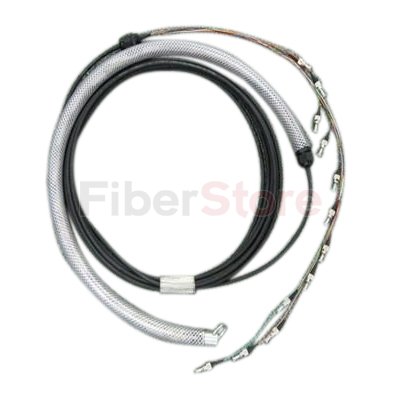As the rapid growth and development of network, we create a lot of network application updates and upgrades almost every couple of years. Facing the situation of rising demand, fiber cabling has become the best answer.
There are lots of different parameters indicators to examine the performance of different network media. Copper networks use electrical signals, as the fiber optic networks use optical signals. Whether using electrical signals or optical signals, the insertion loss, return loss, noise and interference would be the main factors affecting network performance. Obviously, the mismatch between joints brought on by the decline in network performance can also be due to the standards mentioned above.
The major characteristics of fiber optic cable, connector, jumper, optical pigtail along with other components are relatively stable in the actual utilisation of the wiring process. Because they are relatively fixed, so the stability of the connections in patch cords (ST to ST fiber patch cable, LC to ST fiber patch cable, etc.) may technically modify the actual fiber optic network. Here’s an analysis and discussion of the optical fiber connection technology in two aspects.
- 1. Splicing Methods: Fusion splicing has a high rate of success, however the joint after splicing is simpler to break or failure. Under normal circumstances, the splice connection loss could be smaller, generally below 0.2dB, but the return loss is difficult to control, while in the optical fiber fusion process, external factors affecting the quality of lots of splicing, for example environmental conditions, operation of proficiency, the matching of optical fiber. Machine splicing process can’t avoid too large fiber loss for individual reality. Moreover, experience tells us the real lack of worth of splicing must test in order to obtain. In the fiber core under a few more, it is easy to damage, if the test answers are not satisfactory or compliance, to be re-selected after which rework it. Following the network has been utilized , when there is have to slowly move the location to be interrupted fiber optic link, a new position in the re-splicing. The suggestions above could be the emergence of all. Let us pay a lot of splicing work and also the extra care the safety of fiber.
- 2. Connector Access: People who involved in the manufacture and manufacture of optical products factory colleagues should be fully aware of this. On-site grinding and the factory production are the two can’t compare the way different factory is specialized grinding machine used by the coarse to fine of five grinding process, can’t adjust the pressure field can not be consistent with manual grinding. Maybe previously, the standard low speed network is acceptable, even if there’s excessive insertion loss and return loss, connection instability, etc., since the amount of fiber rich enough to absorb the impact factors. However, in today’s increasingly high end network, a lot of indicators and parameters are extremely sensitive. Because the design requirements or neglect to link effort and time, so the designer or construction are headache, loss occurs beyond the network design requirements, testing such things can’t occur.
 In order to solve the optical fiber connection problems might be encountered, so that the design, construction, maintenance and employ of more reliable and stable, the German company has developed the pre-connect technology. According to the actual needs of the scene, the pre-connect technology can pick pre-terminated connectors at each side from the PE or LSZH for indoor or outdoor optical cable. Pre-cable is used for connecting private branch parts. The bare optical fiber cable in the output may become resistant pull, or compression of 3.0/2.0 cable. You’ll be able to eliminate fiber optic network design, construction and employ of various uncertain factors that may cause damage to the fiber optic link or security implications. The entire guarantee system security meets the objective of the design requirements.
In order to solve the optical fiber connection problems might be encountered, so that the design, construction, maintenance and employ of more reliable and stable, the German company has developed the pre-connect technology. According to the actual needs of the scene, the pre-connect technology can pick pre-terminated connectors at each side from the PE or LSZH for indoor or outdoor optical cable. Pre-cable is used for connecting private branch parts. The bare optical fiber cable in the output may become resistant pull, or compression of 3.0/2.0 cable. You’ll be able to eliminate fiber optic network design, construction and employ of various uncertain factors that may cause damage to the fiber optic link or security implications. The entire guarantee system security meets the objective of the design requirements.
Cable connection and installing of pre-construction flow chart with a number of ways of traditional fiber optic terminals compared to pre-connect technology which uses fiber optic directly, that is, pre-terminated fiber cable with no fiber connection point.